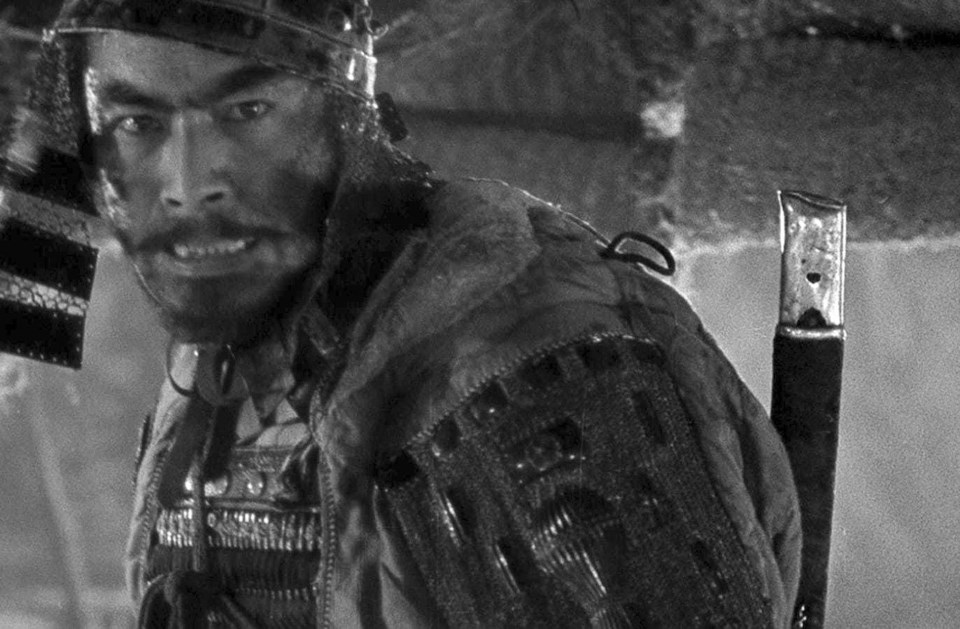NEW YORK (AP) ŌĆö Akira KurosawaŌĆÖs ŌĆ£Seven SamuraiŌĆØ is celebrating its 70th anniversary this year. But despite its age, the vitality and fleet-footed movement of KurosawaŌĆÖs epic is still breathtaking.
To watch it again is to be swept along, all over again, by its flowing action and breadth of vision. Just as swiftly as Kambei Shimada (Takashi Shimura), the noble samurai leader of the seven, sprints this way and that in the climactic battle, ŌĆ£Seven SamuraiŌĆØ moves ŌĆö man, does it move. It flies through rice fields and down wooded pathways. KurosawaŌĆÖs camera doesnŌĆÖt anticipate where the action is running so much as chase headlong after it.
For many of its admirers, has likewise been a kind of pursuit. ItŌĆÖs not that KurosawaŌĆÖs movie is so elusive ŌĆö itŌĆÖs a fairly straightforward tale that states its meaning plainly. Its mystery is more the kind reserved for a grand monument whose existence seems as unfathomable as it is undeniable.
ŌĆ£Seven Samurai,ŌĆØ a 207-minute epic about a 16th-century farm community that turns to a band of samurai to defend itself from marauding bandits, has seemed to always be here. ItŌĆÖs about as lodged in movie canon as possible. Any beginner list for world cinema probably includes it. In the of critics and filmmakers, itŌĆÖs slid slightly but not much. In 2022, it ranked No. 20, fittingly right alongside ŌĆ£Apocalypse Now,ŌĆØ whose director, , is one of KurosawaŌĆÖs most devoted acolytes.
Coppola and his contemporaries like and worshipped Kurosawa. Scorsese once described ŌĆ£the shock of that level of masteryŌĆØ when he encountered KurosawaŌĆÖs movies in the 1950s. Later generations of filmmakers have had similar reactions. Alexander Payne called ŌĆ£Seven SamuraiŌĆØ a thunderbolt that changed his life. After seeing it as a young man, : ŌĆ£I will never climb a mountain that high but I want to be on that mountain.ŌĆØ
ŌĆ£No one has come near it,ŌĆØ the critic Pauline Kael wrote years ago ŌĆö a judgement that still holds.
This summer, timed to the 1954 filmŌĆÖs 70th anniversary, a new restoration of ŌĆ£Seven SamuraiŌĆØ is playing in theaters beginning Wednesday in New York and expanding around the country July 12. ItŌĆÖs a chance to revisit a stone-cold classic in all its big-screen glory.
Affection, of course, isnŌĆÖt universal for ŌĆ£Seven Samurai.ŌĆØ Some quarters of critics will always prefer Ozu or Mizoguchi. KurosawaŌĆÖs appeal in the West has always been in part because he, himself, was steeped in Hollywood genre films. Kurosawa, who made ŌĆ£Seven SamuraiŌĆØ after the masterworks of ŌĆ£RashomonŌĆØ (1950) and ŌĆ£IkiruŌĆØ (1952), was influenced by John FordŌĆÖs films. Westerns, in turn, took after KurosawaŌĆÖs masterpiece, beginning with the 1960 John Sturges remake, ŌĆ£The Magnificent Seven,ŌĆØ a film that took the American title from the initial U.S. release of ŌĆ£Seven Samurai," for which Toho Studios cut 50 minutes.
The long influence of ŌĆ£Seven SamuraiŌĆØ can be seen everywhere from the sideways wipe transitions of ŌĆ£Star WarsŌĆØ to PixarŌĆÖs ŌĆ£A BugŌĆÖs Life.ŌĆØ And, given how many movies since have taken more superficial approaches to its band-of-warriors-assemble narrative, a pessimistic view of ŌĆ£Seven SamuraiŌĆØ could lament it as a forerunner to todayŌĆÖs spectacle-first big-budget movies. Shot in 148 days spread out over an entire year, ŌĆ£Seven SamuraiŌĆØ was at its time the most expensive Japanese film ever made, and one of its most popular at its box office.
But ŌĆ£Seven SamuraiŌĆØ shouldnŌĆÖt have to pay for its paler imitations. Watching KurosawaŌĆÖs masterpiece again, whatŌĆÖs startling is just how much it remains in a class by itself. You could point to particular elements ŌĆö The choreography! The rain! Toshiro Mifune! ŌĆö but it goes deeper than the vast sum of its many parts.
When Kurosawa decided to make what would be his first samurai film, Japan was just emerging from postwar American occupation. The samurai film had gone somewhat dormant during that period, and ŌĆ£Seven SamuraiŌĆØ would help reestablish it.
But Kurosawa's film, which was written by him with Shinobu Hashimoto and Hideo Oguni after a lengthy period of research, juggles themes of individualism and sacrifice for the common good that resonated in postwar Japan. ŌĆ£Seven Samurai,ŌĆØ though, is closer to movie myth than local legend. Its ultimate battleline isn't between the samurai-assisted villagers and the bandits but lies in the tension between the samurai and the villagers, who anxiously hide their women from the hired warriors and who, in the end, celebrate a victory that's different than that of the samurai.
ŌĆ£In the end, we lost this battle, too,ŌĆØ a surviving samurai says.
ŌĆ£Seven Samurai,ŌĆØ hopeful and tragic at once, is less about a battle of good vs. evil than it is a timeless soldier truth. The samurai don't, as the villagers do, return to normal life. And for those that perish face down in the mud ŌĆö moments that Kurosawa pauses to linger on, a perspective Michael Mann would later adopt in the deaths of ŌĆ£HeatŌĆØ ŌĆö destiny is particularly cruel. In this eternally kinetic film, its moments of stillness are often the most profound.
___
Follow AP Film Writer Jake Coyle at
Jake Coyle, The Associated Press



